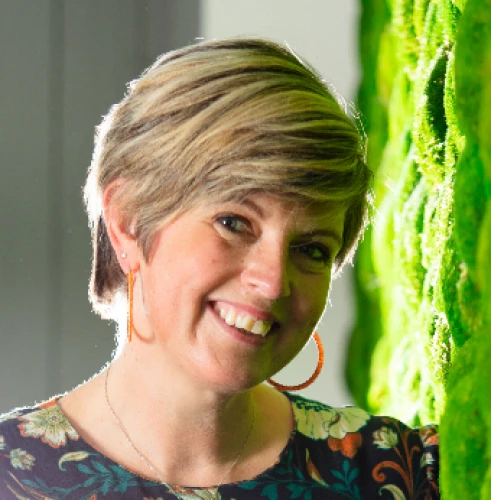How to conduct a focus group: Nine simple steps for startups
HOME / / How to conduct a focus group: Nine simple steps for startups
Running a focus group – where you get together a group of people to ask them for their feedback on something - is a great way to uncover information to help you improve. And it can save you time in the long run, by steering you towards activities that add the most impact to your business.

What is a focus group?
A focus group brings together a group of people from your target audience to discuss a planned product or service. It is a traditional market research technique used to gather opinions and understand attitudes before a product goes into production or a service is developed.
In a focus group, conversation flows freely and provides value insights into how people feel about what you're proposing. This feedback can help you make sure you're meeting customer needs and expectations effectively... and profitably.
1. Work out what you want to achieve
Before you set up your focus group, you need to be clear on what you want to get out of it. Your goals will inform who you invite and how you run the group. For example, do you want to canvas opinion about a proposed product? If so, you’ll want to invite a mix of people to see who it appeals to most. If you want to find out what current customers think about your product, you’ll need to select people from your existing customer base.
2. Decide who you’d like to attend
To make sure conversation flows and allows everyone the opportunity to contribute, you should aim for six to 12 participants. The make-up of that group will be guided by your goals (see above). Think whether you want a broad group that represents all demographics; or a highly targeted one, for example, only affluent men aged 45-55.
3. Recruit participants
There are a number of ways to recruit people. If you are running a focus group with existing customers, you can contact them directly. It is a little trickier to recruit members of the general public. Try:
social media - post information on your page and ask people to share, or in groups relevant to your target audience
print materials – ask local shops and businesses to display a poster or flyers
online event sites – set up a free event listing on a site like Eventbrite and share that link online
To encourage people to take part, offer an incentive such as a high street shopping voucher – something in proportion to the amount of their time you need. Don’t offer one of your products as an incentive or you risk only recruiting people who know and like your products already!
4. Sort out the logistics
Duration: Aim for no more than 90 minutes for your focus group. People start to flag after that.
Venue: Make sure you pick a venue that is accessible to all or you risk getting biased results. For example, using a venue that is only accessible by car automatically excludes people who use public transport. That could give you very skewed results if your focus group is to assess the market for a folding bike that fits on buses more easily.
Barriers: To maximise the likelihood of people taking part, remove any barriers to participation. For example, having to pay for parking or travel long distances. Don’t forget barriers that might only affect certain groups. For example, holding a focus group during the working day could exclude professionals from taking part.
Catering: Make sure you have refreshments. Having self-serve refreshments can help break the ice at the start of the day. And don’t forget that talking is thirsty work!
5. Work out what you’re going to ask
Think of a focus group as a guided discussion rather than the opportunity to ask lots of questions. You want to stimulate a conversation that will deliver honest insights and not steer participants to give the answers you want to hear (consciously or unconsciously!)
Don’t ask questions that can be answered with just a yes or no. That kills conversation.
Ask open ended questions to get people chatting. Like ‘What do you think of…?’ ‘Why do you choose…?’
Only ask one question at a time.
Don’t ask specific questions about your product at first. People tend to give the ‘right’ answer that they think the leader wants to hear.
6. Get help
You will need at least two people to run your focus group: one person to guide the discussion, one person to take notes. Trust us, don’t try to do it on your own! You’ll be spread too thinly. It is easy to lose track of what you’re asking and forget to note down important insights. Rope in a colleague or a friend to be part of your tag team.
You might find it helpful to record the session, so you can refer back to exact quotes later. If you do this, make sure you notify participants that this is happening and exactly how you’ll use this information. Delete it as soon as it is no longer needed.
7. Run the focus group
Arrive an hour before the event is due to start so you can set up the room and refreshments
Greet people as they arrive and give them name tags
Encourage them to chat and get to know one another over a cuppa
Seat the group and introduce yourself
Outline the broad aims of the group and set the ground rules (no mobile phones, let everyone speak, point out the fire exits)
After the focus group has finished, thank people for taking part and give them their voucher
8. Write up the results
After the focus group, you need to look at what you’ve learnt. Look for themes in the comments and categorise them. For example, if your focus group was on how people choose a hand cream, the following themes might emerge: fragrance, feel, price, packaging. Divide all of the answers into these categories and you’ll know what is most important to buyers.
9. Take action
Once you’ve unlocked insights through your focus group, you can start building them into your strategy. For example, if your hand cream focus group ranked fragrance more highly than packaging, you might decide to dedicate more resources to getting the smell right instead of continuing to develop the label.
Got the thumbs up for your bright idea?
If you've completed your market research and you're ready to talk to someone about funding your idea, you can explore a low-interest Start Up Loan.

"We’re delighted to be the 2000th loan recipients!"
